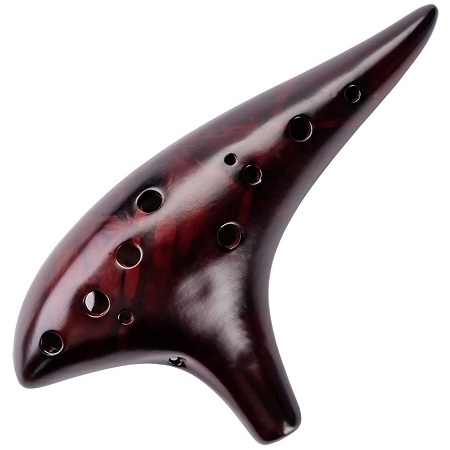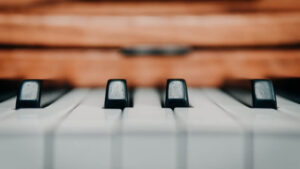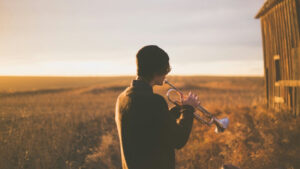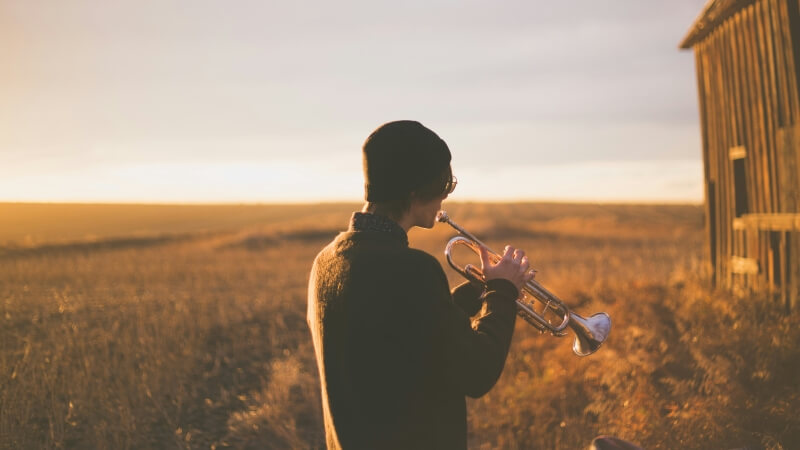
Exploring the Mystical Sounds: The World of the Ocarina
The ocarina is an ancient wind instrument known for its otherworldly and evocative sound. With a history spanning over 12,000 years across cultures worldwide, the

The captivating sound of an ocarina has the power to transport you to distant realms with just a few melodious notes.
The word “ocarina” itself evokes a sense of magic and wonder, and in this blog, we’re going to uncover the secrets behind the mesmerizing variations in ocarina sound.
Imagine sitting under a starlit sky, with the soft strains of an ocarina serenading your senses.
Whether you’re a fan of video games or a music enthusiast, you’ve likely encountered the enchanting ocarina.
But have you ever wondered why this humble instrument produces such a diverse range of tones and melodies?
In this exploration of ocarina sound, we’ll embark on a whimsical journey through the intricacies of its creation and the science that underlies its enchanting sounds.
From ancient clay instruments to modern crafted works of art, the ocarina has undergone a fascinating transformation over the centuries. The journey from its humble beginnings to the intricate designs we see today has been nothing short of remarkable.

The ocarina’s roots can be traced back to ancient civilizations, including the Mayans and the Chinese.
These early ocarinas were often crafted from clay and had a simple design with just a few finger holes. While they might have lacked the sophistication of today’s ocarinas, they were the precursors to the magical instruments we know today.
As time passed, ocarina craftsmanship evolved. In the 19th century, Italian craftsman Giuseppe Donati made significant contributions to the ocarina’s development.
He refined its shape, added more finger holes, and experimented with different materials, leading to the emergence of the classic “sweet potato” ocarina.
The type of material used in crafting an ocarina can significantly affect its sound. While clay ocarinas are known for their earthy and warm tones, ceramic and metallic variations offer a brighter and more vibrant sound.
Clay ocarinas, with their organic and porous nature, produce a distinct and resonant sound. The porous surface of the clay interacts with the moisture from the player’s breath, creating a unique timbre that is both warm and enchanting. These traditional ocarinas are cherished for their ability to capture the essence of ancient melodies.
In contrast, ceramic ocarinas provide a more crystalline and precise sound. The smooth surface of ceramic allows for precise tuning and a brilliant, clear tone. These ocarinas are favored by musicians seeking a sharp and defined sound.
For those looking for a touch of modernity, there are even ocarinas made from materials like plastic and metal. These ocarinas offer durability and consistency in sound, making them suitable for a wide range of musical styles.
The shape of an ocarina is not merely an aesthetic consideration; it is a critical factor that shapes the instrument’s sound in unique ways.

Ocarinas come in various shapes and designs, each influencing the instrument’s sonic character and tonal capabilities. Let’s delve into the fascinating world of ocarina shapes and their impact on the music they create.
The classic “sweet potato” ocarina is one of the most iconic shapes in the world of musical instruments.
Characterized by its elongated body and symmetrical finger hole placement, this design is more than just visually appealing; it plays a crucial role in shaping the ocarina’s sound.
The elongated body of the sweet potato ocarina allows for a balanced distribution of airflow.
As the player breathes into the instrument, the air travels through a carefully designed network of chambers and tunnels within the ocarina. The result is a rich and versatile tonal range that can evoke a wide array of emotions.
The symmetrical arrangement of finger holes is another key feature of the sweet potato ocarina.
This design provides a level of consistency and ease of play that is favored by many musicians. It allows for precise control over pitch and dynamics, making it suitable for both melodic solo performances and ensemble play.
When it comes to ocarinas, size matters—a lot. Ocarinas come in various sizes, from soprano to bass, and each size offers a distinct tonal range and musical potential.
Soprano Ocarinas: These are the smallest members of the ocarina family. Soprano ocarinas produce high-pitched tones that are delicate and ethereal. Their sound is akin to the tinkling of fairy bells, adding a touch of magic to the music they create. They are often chosen for playing melodies that require a light and airy quality, making them the perfect choice for enchanting tunes.
Alto and Tenor Ocarinas: Positioned in the middle of the size spectrum, alto and tenor ocarinas offer a balanced range that is well-suited for a wide variety of musical genres. Musicians appreciate their versatility, as they can seamlessly blend with other instruments in an ensemble setting. Their tonal richness and adaptability make them a popular choice among ocarina enthusiasts.
Bass Ocarinas: At the other end of the size spectrum, we find the giants of the ocarina family—bass ocarinas. These instruments produce deep and resonant tones that can evoke a sense of grandeur and majesty. The richness of their sound makes them ideal for adding depth and richness to ensemble performances, creating a powerful sonic foundation that anchors the music.
Within an ocarina lies a labyrinth of sound chambers, each carefully designed to manipulate the air and create its unique sound signature.
Ocarina sound chambers are like the heart of the instrument, where the magic truly happens.
These chambers are strategically placed within the ocarina’s body and are responsible for shaping the sound as the air flows through them.
One of the key elements of ocarina design is the placement of the voicing, a small duct or channel that directs the airflow from the player’s breath into the sound chamber. The shape and position of the voicing have a profound impact on the ocarina’s sound.
By adjusting the voicing, artisans can fine-tune the instrument to produce specific tones and achieve the desired sound quality.
Another intriguing aspect of ocarina sound chambers is their resonance.
When air enters the chamber, it bounces off the walls and interacts with the air column, creating a complex interplay of vibrations. This resonance is what gives the ocarina its unique and enchanting sound.
Artisans carefully calculate the dimensions of the sound chambers to achieve the desired resonance characteristics, resulting in an instrument that can produce a wide range of tones and emotions.
To gain a deeper understanding of the art of crafting ocarinas and their sonic secrets, we sit down with a skilled ocarina craftsman. Through their expert perspective, we’ll gain unique insights into the intricacies of the craft and learn how these artisans achieve specific sounds, elevating the ocarina from a mere instrument to a work of art.
In our conversation with the artisan, we learn that ocarina craftsmanship is a blend of science and artistry. Each ocarina is meticulously crafted with precision and attention to detail.

The artisan explains how the choice of materials, the shaping of the instrument, and the tuning of the sound chambers are all crucial factors in achieving the desired sound.
The artisan also shares the importance of experimentation in ocarina crafting.
They describe how they often make slight adjustments to a prototype to fine-tune its sound until it reaches perfection. It’s a delicate balance of tradition and innovation, where the artisan’s experience and intuition play a significant role.
In the world of musical instruments, the ocarina stands out as a magical and enchanting creation. Its ability to produce a wide range of sounds is a testament to the craftsmanship and science behind its design. From the evolution of materials to the intricacies of shape and the mysteries of sound chambers, the ocarina’s sound variation is a result of a harmonious interplay of factors.
As we’ve unraveled some of the secrets today, remember that the world of ocarina music is as vast and enchanting as the instrument itself, waiting for you to explore its melodies and magic.
The ocarina’s evolution, material choices, shape, size, and sound chambers all contribute to its captivating variation in sound. So, next time you hear the soulful melody of an ocarina, you’ll have a deeper appreciation for the mysteries that lie behind its beautiful tunes.
As you embark on your own musical journey with this remarkable instrument, you’ll find that the ocarina’s sound is not just a product of its physical components but also a reflection of the passion and artistry of those who craft and play it.
Whether you’re a musician or simply an admirer of music, the ocarina’s unique charm and versatility will continue to enchant and inspire you.
So, pick up an ocarina and let its whimsical melodies carry you away to far-off lands, where the mysteries of sound await your exploration.


The ocarina is an ancient wind instrument known for its otherworldly and evocative sound. With a history spanning over 12,000 years across cultures worldwide, the

When it comes to taking care of your musical instruments, ocarina requires special attention, especially in terms of disinfection. Whether you’re a professional musician or

When it comes to preserving the charm and sound of your ocarina, storage is key. Just like a treasured book or a fine wine, your

The world of music is filled with diverse and captivating instruments, and among them, the ceramic ocarina stands as a unique and charming creation. With

The ocarina is an ancient wind instrument known for its otherworldly and evocative sound. With a history spanning over 12,000 years across cultures worldwide, the

When it comes to taking care of your musical instruments, ocarina requires special attention, especially in terms of disinfection. Whether you’re a professional musician or

When it comes to preserving the charm and sound of your ocarina, storage is key. Just like a treasured book or a fine wine, your

The world of music is filled with diverse and captivating instruments, and among them, the ceramic ocarina stands as a unique and charming creation. With
Copyright © 2024 echofluteocarinas. All Rights Reserved.